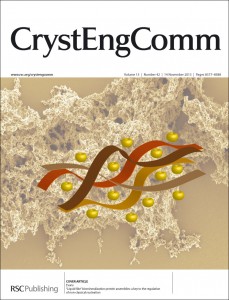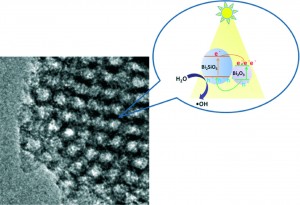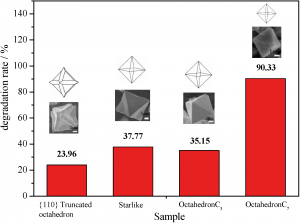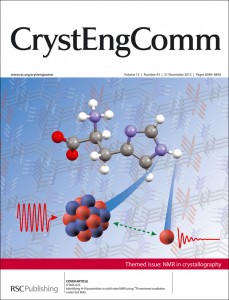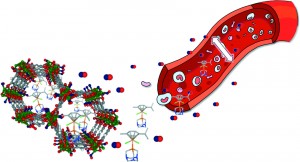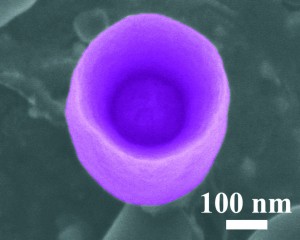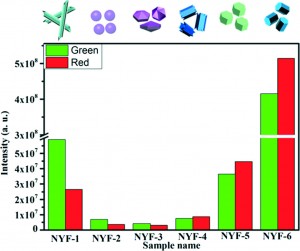Control of the formation of rod-like ZnO mesocrystals and their photocatalytic properties
Yanqiang Yang, Yongqiang Yang, Haixia Wu and Shouwu Guo
CrystEngComm, 2013,15, 2608-2615 DOI: 10.1039/C2CE26429C
In this paper Y. Yang et al. demonstrate a simple synthesis approach towards ZnO mesocrystals. Rod-like ZnO mesocrystals consisting of ZnO nanoparticles have been prepared successfully through simply mixing the aqueous Zn(Ac)2 and NaOH in the presence of tartaric acid followed by high temperature annealing removing the organic linker. The reaction proceeded via a Zn(OH)2 precursor. It was demonstrated that several factors including the reaction temperature, the ratio of tartaric acid to Zn(Ac)2 in the reaction mixture and the annealing temperature could affect the morphology and structure of the mesocrystals. It was illustrated that the as-obtained ZnO mesocrystals have good stability and photocatalytic performance in photodegradation of methyl orange and photoreduction of Cr6+ in water. The best photocatalytic performance was reached for the mesocrystals annealed at 600 °C. This simple synthesis approach can be upscaled and might therefore become suitable for photocatalysis applications.
Oriented attachment growth of ultra-long Ag2Se crystalline nanowires via water evaporation-induced self-assembly
Chunyan Zeng, Weixin Zhang, Shaixia Ding, Zeheng Yang, Hui Zeng and Zhangcheng Li
CrystEngComm, 2013,15, 5127-5133 DOI: 10.1039/C3CE40232K
C. Zeng et al. demonstrated a synthesis method for ultra-long Ag2Se crystalline nanowires with lengths up to several hundred micrometers and diameters of 100–300 nm by a water evaporation-induced growth method at 120 °C for 6 h. The particle growth is mainly based on oriented attachment followed by subsequent nanoparticle fusion. The oriented attachment is based on secondary nucleation of small nanoclusters, which accumulate in the space between two nanoparticles as shown by HRTEM images. They are suggested to play an active role in the oriented attachment process. This study is an interesting extension of the oriented attachment concept of direct nanoparticle interaction and fusion since it involves a further step of secondary cluster nucleation, which then promote the oriented attachment process of the nanoparticles.
Surfactant-free CuO mesocrystals with controllable dimensions: green ordered-aggregation-driven synthesis, formation mechanism and their photochemical performances
Shaodong Sun, Xiaozhe Zhang, Jie Zhang, Liqun Wang, Xiaoping Song and Zhimao Yang
CrystEngComm, 2013,15, 867-877 DOI: 10.1039/C2CE26216A
Surfactant free approaches are of high interest in non-classical crystallisation to simplify the formation mechanisms. S.D. Sun et al. have demonstrated that the formation of CuO mesostructures is essentially determined by the characteristics of [Cu(OH)4]2− precursors. Oriented nanoparticle-aggregation with tailoring shapes in different dimensions can be achieved at moderate temperatures around 80 °C in water in different concentrations of reactants. The 3D “layer-by-layer” growth of mesocrystalline CuO spindles is successfully achieved at low concentrations of reagents, while the 2D “shoulder-by-shoulder” growth of mesostructural CuO plates is obtained at high reactant concentrations. This study is a nice example for bottom-up assembly of controllable ordered mesocrystalline architectures without any organic additive based on TEM / HRTEM investigations. It offers a good opportunity to understand the formation mechanism and growth process of surfactant-free CuO mesostructures with controllable aggregation-based behaviour. In addition, photocatalytic properties of the obtained CuO mesocrystals are reported.
Template-free facile solution synthesis and optical properties of ZnO mesocrystals
Sha-Sha Wang and An-Wu Xu
CrystEngComm, 2013,15, 376-381 DOI: 10.1039/C2CE26638E
This study is another interesting example of mesocrystal synthesis without added organic molecules, which are usually the basis for mesocrystal formation. However, since the reaction was performed in butanol in an autoclave, the butanol can serve as additive itself. The ZnO mesocrystal microspheres as well as stacks of hexagonal platelets were assembled with primary hexagonal nanoplatelets. Intrinsic dipole–dipole interactions between the specific (001) countercharged faces of the ZnO nanocrystals play an important role in this mesoscale transformation. These mesocrystals are a typical example for a dipole driven mechanism resulting in a mesocrystalline structure determined by the dipole field lines of a primary dipole, rather than a perfect 3D aligned nanoparticle structure.
Top-down fabrication of hematite mesocrystals with tunable morphologies
Jinguang Cai, Suyue Chen, Jun Hu, Zhi Wang, Yurong Ma and Limin Qi
CrystEngComm, 2013,15, 6284-6288 DOI: 10.1039/C3CE40414E
This paper is a fascinating demonstration that mesocrystals can also be fabricated by top down approaches rather than by the bottom up self assembly approaches which everyone associates with mesocrystals.
Hematite mesocrystals with tunable morphologies by selective HCl etching of hematite pseudocubes are reported, which is the first shape-controlled fabrication of mesocrystals via chemical etching. Particularly, porous hematite mesocrystals with unique cone-like and sandglass-like morphologies were produced from micron-sized pseudocubes (or microcubes) while disc-like hematite mesocrystals were obtained from submicron-sized pseudocubes (or submicrocubes). This study therefore opens an entirely new and simple pathway towards mesocrystalline structures. In addition, the obtained hematite mesocrystals exhibited enhanced visible-light photocatalytic activity and high Cr(VI) removal capacity.
Self-assembly of magnetite mesocrystal microdisks with hierarchical architectures
Ruimin Yao, Chuanbao Cao and Ju Bai
CrystEngComm, 2013,15, 3279-3283 DOI: 10.1039/C3CE26949C
A related etching based method towards mesocrystals is reported by R.M. Rao et al. The authors start from an iron foil which is transformed into mesocrystals of magnetite microdisks under hot and concentrated alkaline conditions by employing oxygen adsorption corrosion. The self-assembled magnetite mesocrystal microdisks have displayed crystalline three-dimensional superstructures. The large size of one formed microdisk is about 30 μm, composed of many 20 nm small nanoparticles. These nanoparticles first self-assembled as thin layers, then the thin layers further self-assembled to a microdisk. All these structures show a new approach towards mesocrystals synthesis.
A facile solid phase reaction to prepare TiO2 mesocrystals with exposed {001} facets and high photocatalytic activity
Li Zhou, Jin Chen, Chuan Ji, Lei Zhou and Paul O’Brien
CrystEngComm, 2013,15, 5012-5015 DOI: 10.1039/C3CE27095E
In this paper Zhou et al. utilise the solid–solid topotactic transformation of NH4TiOF3 to anatase TiO2 by a simple sintering process. In order to obtain the exposed {001} facets on the surfaces of final products, the sintering temperature must be between 700 °C and 900 °C. The approach is flexible, controllable, greener and easier in comparison with widely-used hydrothermal methods. The photocatalytic activity of the obtained TiO2 mesocrystals is much higher than that of the corresponding TiO2 polycrystalline materials. The exposed {001} facets are believed to play a very important role in the photocatalysis process.
Effect of bulk pH and supersaturation on the growth behavior of silica biomorphs in alkaline solutions
Josef Eiblmeier, Matthias Kellermeier, Doris Rengstl, Juan Manuel García-Ruiz and Werner Kunz
CrystEngComm, 2013,15, 43-53 DOI: 10.1039/C2CE26132D
The last highlighted study concerns the fascinating nanoparticle hybrid superstructures found as the so-called “Biomorphs”. This study shows that co-precipitation of witherite and silica affords crystal aggregates with complex curved morphologies only if the starting pH of the mother solution is adjusted to values within a certain window, which was found to range from pH 10.2 – 11.1. At both lower and higher initial pH, only fractal architectures, resulting from self-similar branching of the carbonate crystal core, were obtained. In situ time dependent measurements of the bulk pH and Ba2+ concentration, enabled the absolute values for the actual supersaturation of the system at distinct growth stages to be calculated. This allows for a deeper understanding of the growth mechanism of these complex materials.
 Prof. Dr. Helmut Cölfen is currently the Professor of Physical Chemistry at the University of Konstanz, Germany. His research interests include non-classical crystallisation, synthesis of organic-inorganic hybrid colloids with complex forms, synthesis of amphiphilic functional block copolymers, and fractionating methods for colloid and polymer analysis.
Prof. Dr. Helmut Cölfen is currently the Professor of Physical Chemistry at the University of Konstanz, Germany. His research interests include non-classical crystallisation, synthesis of organic-inorganic hybrid colloids with complex forms, synthesis of amphiphilic functional block copolymers, and fractionating methods for colloid and polymer analysis.


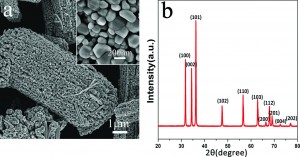
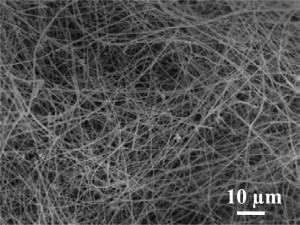
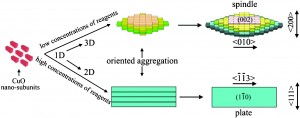
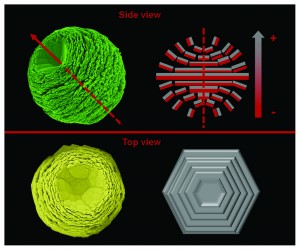
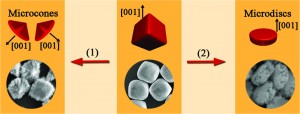
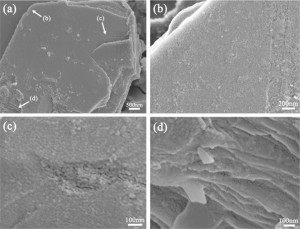
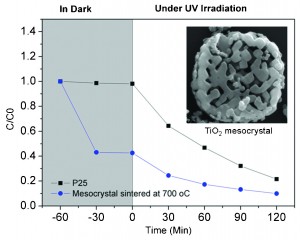










![Pi-Bonded molecular wires: self-assembly of mixed-valence cation-radical stacks within the nanochannels formed by inert tetrakis[3,5-bis(trifluoromethyl)phenyl]borate anions Pi-Bonded molecular wires: self-assembly of mixed-valence cation-radical stacks within the nanochannels formed by inert tetrakis[3,5-bis(trifluoromethyl)phenyl]borate anions](https://blogs.rsc.org/ce/files/2013/11/c3ce41719k-ga-300x110.jpg)


 Gwenda Kyd has a PhD in metallocarborane chemistry from the University of Edinburgh. Other research work includes the spectroscopic study of the structure of glasses and organometallic electron-transfer reactions and the preparation of new inorganic phosphors. Currently she is writing a book on chemicals from plants.
Gwenda Kyd has a PhD in metallocarborane chemistry from the University of Edinburgh. Other research work includes the spectroscopic study of the structure of glasses and organometallic electron-transfer reactions and the preparation of new inorganic phosphors. Currently she is writing a book on chemicals from plants.